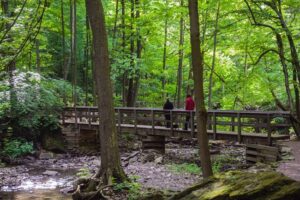Shared Land Map interactive tool underway to help build relationships

By Rick Garrick
TORONTO — The Shared Path Consultation Initiative is developing a Shared Land Map interactive tool through funding from the Greenbelt Foundation for use in the Greater Golden Horseshoe area in southern Ontario. Based on the Arizona Consultation Map, the interactive tool will enable First Nations to identify their territories and borders and support their participation in local planning decisions and streamline the municipal consultation process.
“The map is a tool for people to know about the Indigenous community and their lands, what treaty they’re in, where the reserves are, and then hopefully, as we move along, get contacts so it makes it easy for people to know who they should be talking to — it can be a tool to help build that relationship that needs to be built,” says Carolyn King, president of the Shared Path Consultation Initiative board and former Chief of Mississaugas of the Credit. “We’re looking to gather the data and input onto the map additional information that will be helpful for people who have to work in that area or want to know.”
King says the Shared Path Consultation Initiative was originally founded in 2017 because they saw the need for an organization that addresses the challenges and opportunities that emerge where land-use change and Aboriginal and Treaty Rights intersect.
“There needs to be more information out there,” King says. “We really started out as a roundtable, a group of interested people coming together to talk about what we thought needed to happen. Now we’re a charity — we still see the need.”
Morgan Peters, executive director at Shared Path Consultation Initiative, says land-use planners and municipalities are “realizing more and more the importance of collaborating and building a relationship with Indigenous communities” on whose traditional territory they operate.
“So the idea of this project we are undertaking is to provide that tool,” Peters says. “It’s meant to be a tool for bridge building, to build the initial contact between those who would want to make changes to land, those who would want to propose a development or anything like that so they can see who they should start speaking with.”
Peters says many people within their network have been asking for this type of interactive tool for years.
“When planners learn the importance of building relationships with Indigenous communities, their first question is often: ‘How do I find out which communities I should be connecting with and how to contact them?’” Peters says. “Now we will be able to direct them to the Shared Land Map as a starting point.”
The provincial government’s Provincial Policy Statement, 2020, which came into effect in May 2020, directs municipal planners, developers and other land-use professionals to engage in conversations and relationship-building with local Indigenous communities from the outset of any proposed land-use change and to include them in decision-making throughout the process.
“Engaging First Nations in land-use planning is not just a legal obligation for land-use professionals, it’s an important means to share knowledge about local issues,” says Edward McDonnell, CEO at Greenbelt Foundation. “This tool is intended to make the engagement process simpler, which benefits municipal planners and provides Indigenous communities with their rightful opportunity to be heard and contribute to key municipal decision-making.”
Shared Path will work with at least 12 First Nations in the Greater Golden Horseshoe area to clearly define their territories and identify potential downstream impacts from developments in other areas and with at least 80 planners to educate them on the interactive tool and Treaty Rights-holding communities during the project.
“First Nations groups are often inundated by requests and that can become very challenging,” McDonnell says. “This tool provides an opportunity building on previous work by Shared Path to support effective municipal engagement.”
Shared Path previously created a prototype of the interactive tool with 20 by 20-kilometre squares based on the Indigenous-Municipal Engagement Program it undertook through a grant from the Greenbelt Foundation in 2018 to support formal engagement and relationship-building activities between First Nations and municipal staff in the Greenbelt.


